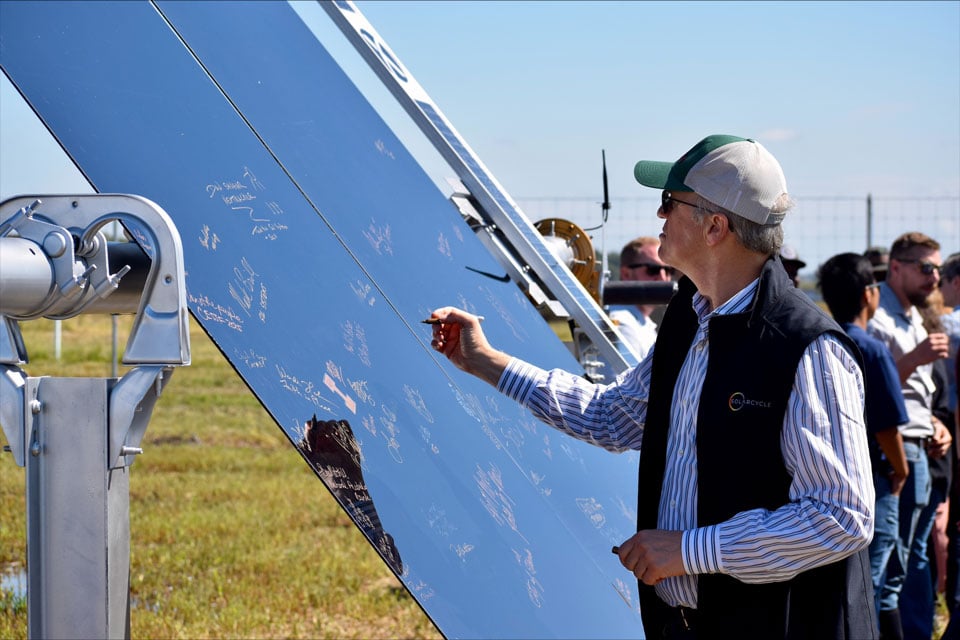
US solar developer Sol Systems has completed construction on a 342MW PV project in the state of Illinois.
The Eldorado solar project in Saline County, southeast Illinois, is Sol Systems’ largest project to date and incorporates what the company called “First-of-Its-Kind” agrivoltaics practices.
Try Premium for just $1
- Full premium access for the first month at only $1
- Converts to an annual rate after 30 days unless cancelled
- Cancel anytime during the trial period
Premium Benefits
- Expert industry analysis and interviews
- Digital access to PV Tech Power journal
- Exclusive event discounts
Or get the full Premium subscription right away
Or continue reading this article for free
In a partnership with non-profit organisation the American Farmland Trust, the site will incorporate rows of Kernza – a trademarked name for a perennial wheat plant known as intermediate wheatgrass – which Sol Systems said will be planted beneath the panels. Sol Systems has also made “community benefit” funding commitments to the local high school, the charity Food Works of Southern Illinois and other local initiatives.
US supply chain
The solar project itself was built using products from tracker manufacturer Nextracker and constructed by contractor SOLV Energy.
The Nextracker trackers at the project were produced “utilising predominantly US steel”, Sol Systems said, and the company has previously said it would be using US-made solar modules at the site. In March last year, it inked a supply deal for US-made modules with international PV manufacturer Canadian Solar.
Dan Shugar, CEO of Nextracker, said: “Most of our supply chain for this project is US-based, using clean American steel and domestically produced components that enabled the project to be constructed with faster lead times while creating local economic benefits.”
US agrivoltaics
Sol Systems said the Eldorado project is “among the first efforts to pursue row-crop agrivoltaics at this scale in the United States.”
Much of the agrivoltaics development in the US, and around the world, has incorporated livestock farming – usually sheep – or relatively small-scale fruit farming alongside the PV installation.
CEO of Sol Systems, Yuri Horowitz, said the Eldorado project proves that “agrivoltaics can move from concept to crops.” The company said that Kernza, the perennial crop which will grow at the site and will be planted in Autumn this year, can improve soil health and “demonstrates how agrivoltaics can enhance farm viability while meeting America’s energy needs.”
“Mutually beneficial partnerships with solar developers can help provide farmers the tools they need to protect their land, soil, and livelihoods,” said Alan Bailey, Midwest solar specialist at American Farmland Trust.
The project will serve as a research centre and will collect data, which Sol Systems said it will share “so others can follow.”
“With substantial acreage of Kernza being cultivated between the tracker rows, this project is a win-win for clean energy and the agricultural community,” Shugar said.
As renewable energy – and solar and wind in particular – become increasingly politicised in the US, despite their rapid growth in recent years, “win-win” solutions like agrivoltaics could become increasingly effective for getting projects built. PV Tech Premium looked into the reasons for growing opposition to utility-scale solar projects across the world earlier this year and the ways that developers are responding






